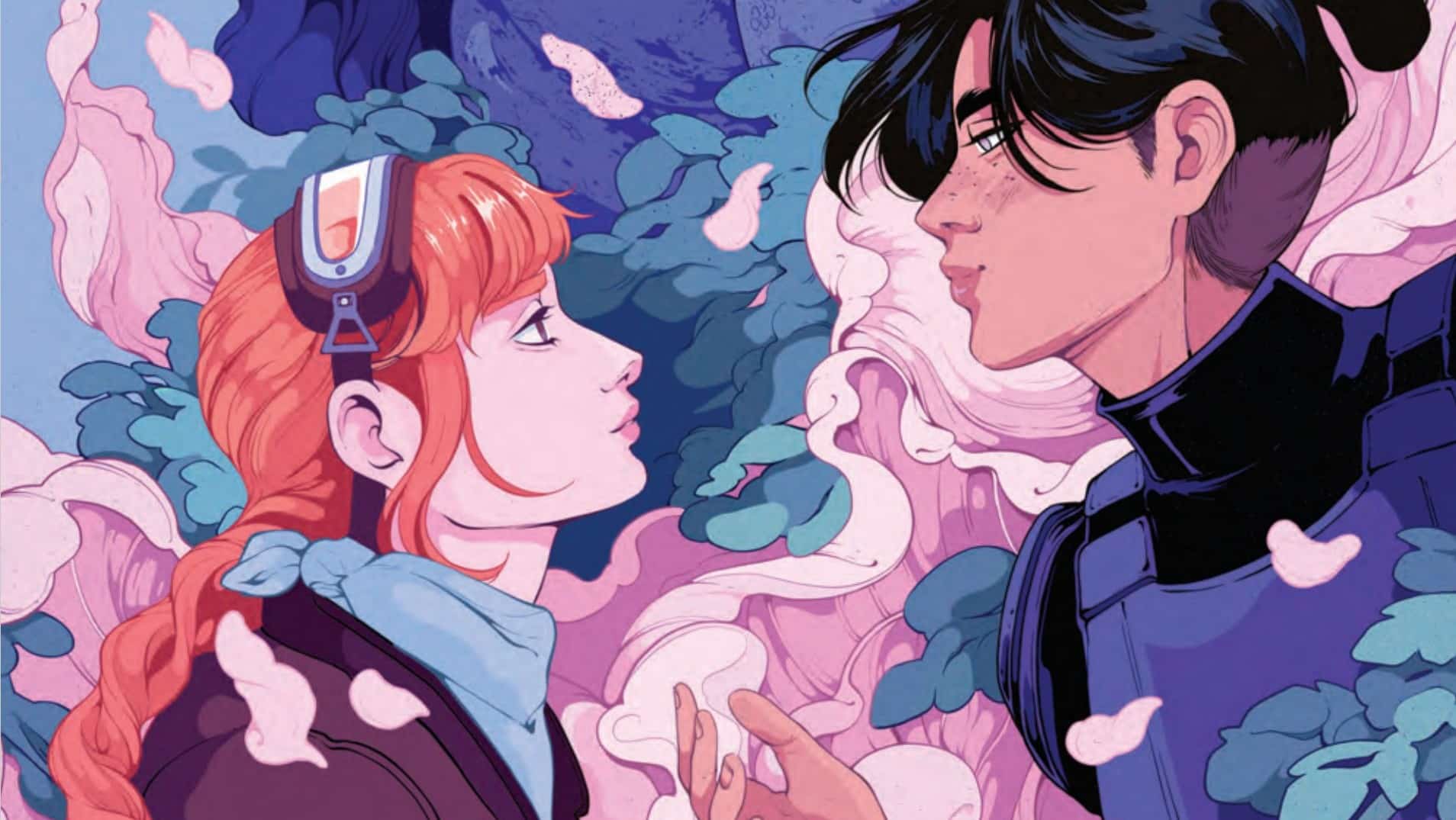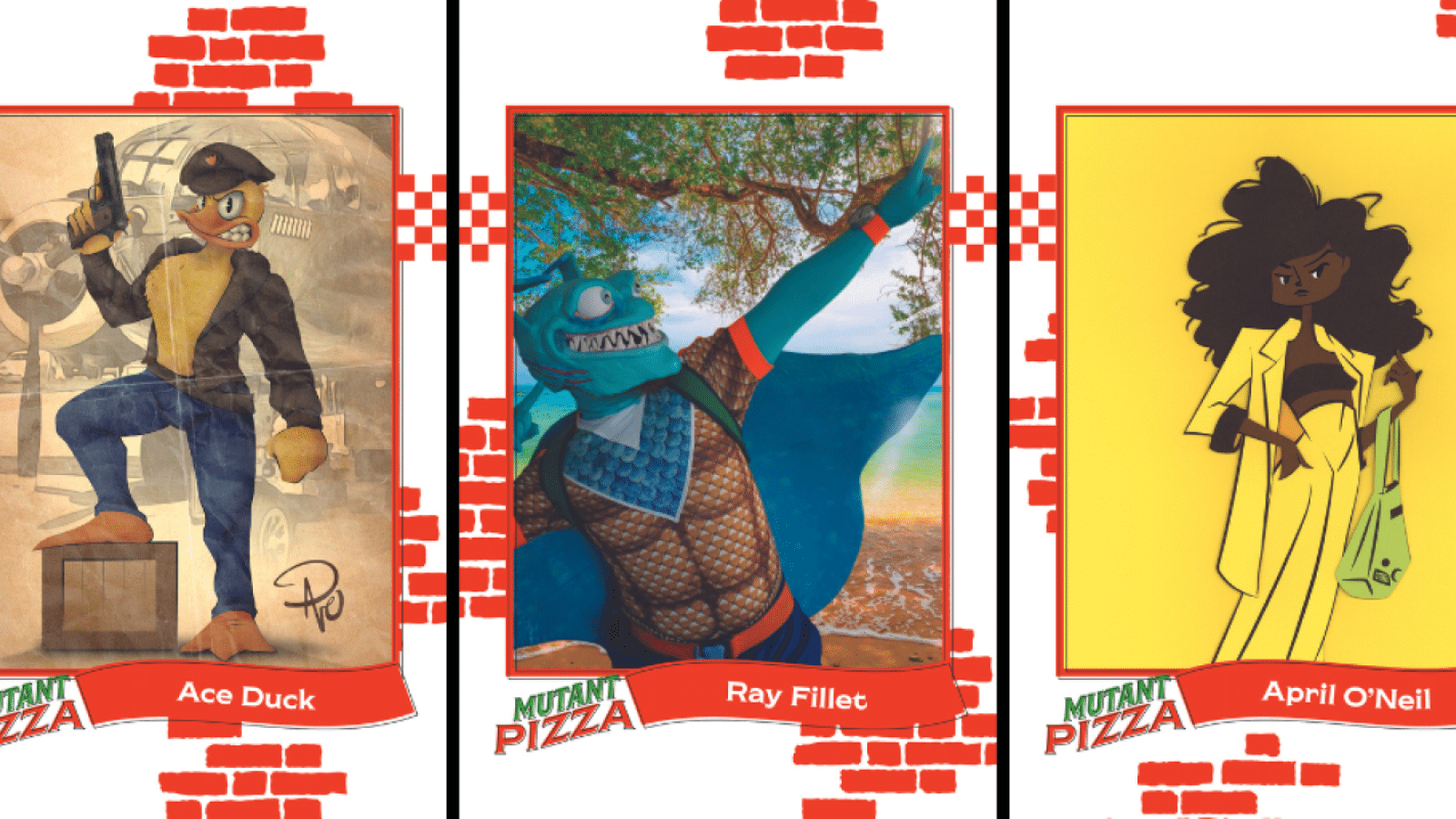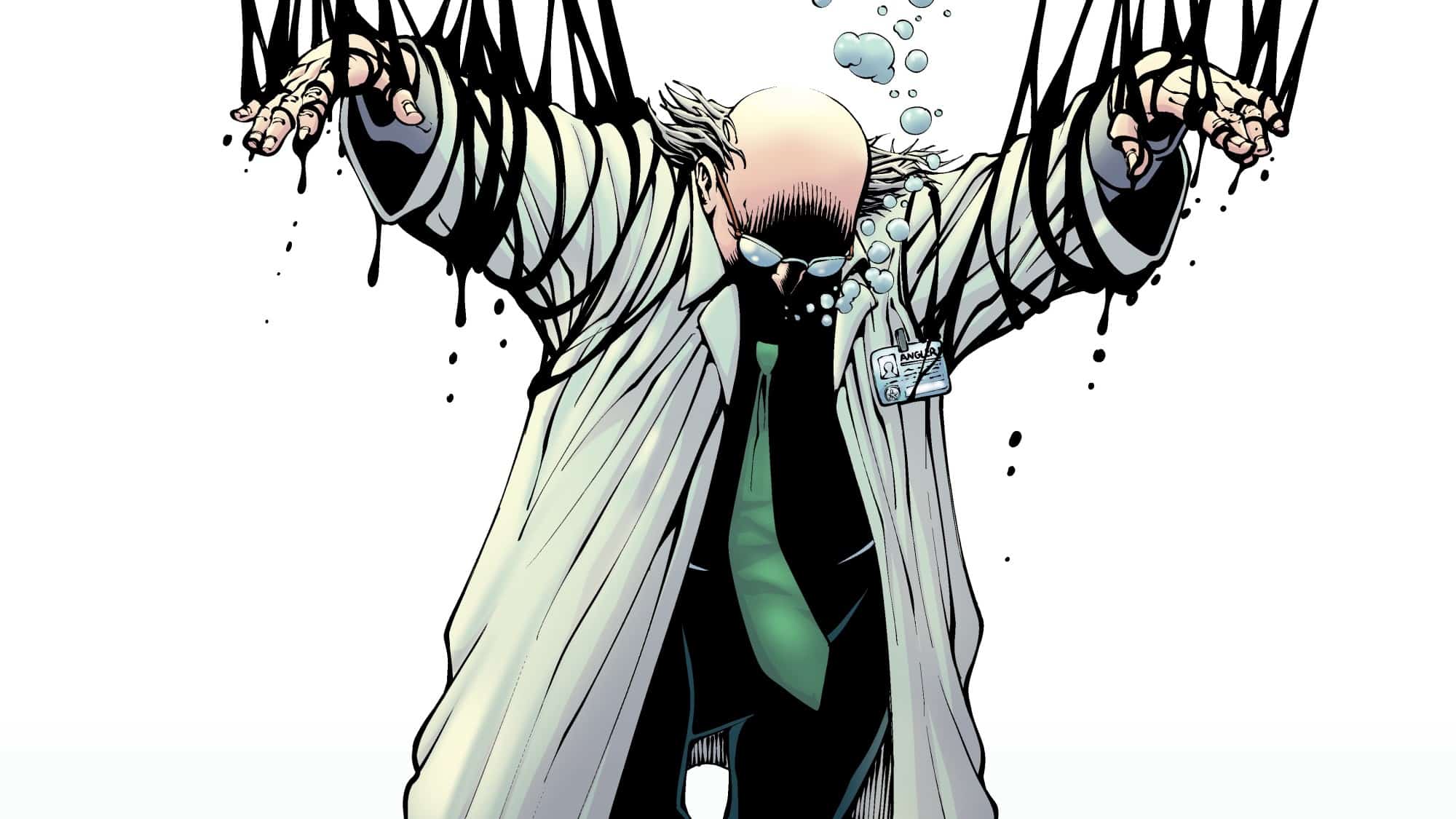
As far as comic storytelling formats go, one rapidly gaining popularity over the past year or so is the season-based format. It is essentially when a story is divided into 6- to 12-issue, self-contained arcs. It also allows for special or one-shot issues in between.
Writer David Booher and Artist Drew Zucker released Canto last year with this format in mind to overwhelming success. Canto is a reimagining of the classic tin man character from The Wizard of Oz. Canto and his people once had hearts, but they’re now replaced with clocks. When his friend’s clock is damaged, Canto sets off on an adventure to bring back her real heart. The story has since become one of the most popular independent books at IDW and, after an additional one-shot, is coming back for a second six-issue season starting this week.
I talked with Booher and Zucker about Canto II: The Hollow Men, which additionally is colored by Vittorio Astone and lettered by Deron Bennett.
Ari: I wanted to start by talking about a framing element I find unique to Canto, which is its beginnings as a whole. In Canto II, the recap, introduction and opening narration all combine to form this complete package that prepares you to enter this “fairy tale adventure” space. Can you talk a bit about what goes into those?
David: Recaps, or “previously on” sections, are so tough. We spent six issues telling a sprawling adventure in Canto: If Only I Had a Heart, and I had to distill that down to basically one page to get new readers up to speed. But I wanted more than just a recap. It worked really well to have the traditional recap page lead directly into the narration of the new adventure.
Drew: The recap page originally wasn’t going to be a part of Vol. 2. We realized early into assembling the first issue though it would not only help get those that missed out on Vol. 1 caught up, but just be a good reminder for everyone. As for what went into it, all the credit on that end really has to go to David.

Ari: What’s really interesting about Canto II and how it talks about hopes and fears is that it really seems to emphasize the ongoing process of those emotions. After Canto comes back from his first story, there’s a sense that he’s “won.” The fears are gone, and he’s brought back hope. You see his friends talk about how thanks to him, they have hope and courage now, and that there’s nothing to fear. But Canto’s been out in the world and has seen the bigger picture and realizes that it’s not that simple. I guess what I’m getting at is, can you talk about how you both portray hope and fear as not just things that you have or don’t, but as abstract entities that are always with you and that you always have to manage?
David: I believe we feel fear and hope based on our own experiences. Canto’s people knew little of their larger world, so in the first arc they feared the unknown. When Canto went on his adventure, they saw him as hope. Canto viewed the world that way too, until he discovered both fear and hope are far more complex. His world isn’t entirely safe or entirely dangerous. And he fell short of his main goal but perhaps he found something better. Now, his people are free and complacent, while Canto knows the danger is still out there. That’s why he worries he’s not the beacon of hope everything thinks he is.
Drew: Canto is first and foremost an all-ages adventure; that’s what we set out to do on the surface. What’s under the hood though is exactly what you’re talking about. We wanted Canto to have more depth than just, “I won and now I have hope and no fear.” We all know that isn’t how the world works, and we both are huge believers that kids are not only smart enough to subconsciously pick up on some of those heavier themes, the reality is that eventually they’ll find that out for themselves. Figuring out how to integrate those ideas into Canto’s story and world though is the real challenge.
Ari: Drew, what were some of the stylistic influences behind Canto as a character and the world around him?
Drew: Oz and Inferno were big ones, obviously, but also the Skottie Young/Eric Shanower Oz series at Marvel. When I saw them do that book, it blew me away stylistically and how dark it actually was. Ultimately though, Canto was born out of a challenge to myself. I had spent the last 6-7 years prior working on a horror book, and I wanted to see if I had it in me to do something that could fit into the mainstream, that wouldn’t require an endless amount of reference and I could use my imagination for (This book has actually required more reference than anything else I’ve ever worked on), and finally if I could tell a true all-ages tale that would bring in some new readership for the industry.

Ari: Are there specific influences behind Canto’s best friends who will be joining him on his new journey?
David: Drew did most of the leg work on design for Canto’s friends. My main goal was to give them separate personalities, which was a challenge when they all started out life as workers without separate identities. But it also reflects their growth now that they’re free. I think of them as our Hobbits by way of the Teenage Mutant Ninja Turtles.
Drew: We looked at a lot of stuff, but we refer to them a lot as Canto’s TMNT team. When we designed them, there was a huge emphasis on making sure that you could immediately tell them apart from one another. After we set that ground rule, the design went to how they would fit into Canto’s world. You can see the size differences in them, so it helps to establish in that society, some of them are the muscle, some of them are the workers, stuff like that is the subconscious world-building that’s fun about this book for us.
Ari: Canto has a very interesting definition of what it means to return “home,” because even back in Arcana, you never get a sense of comfort from a more permanent location because of how dangerous it is. We often see that for Canto, home is where his people are, and now in Canto II, he’ll have a little piece of his home traveling with him. How will that change how he approaches risk and how he’ll fight the challenges he’ll face?
David: You’re right, Canto’s people have never really had a home. In Arcana, they were enslaved. In New Arcana, they’ve tried to build a new home, but they soon learn they cannot escape the shadow of the Shrouded Man. So Canto’s fight is never about defending what they believe to be “home” but about protecting the ones he cares about. You’ll see that play out in Canto II. It may be cliche, but it’s true — home is not about where you are, but who you’re with.
Drew: I think this helps drive his character development. You’ll see him grow because he doesn’t just have one person to look after anymore. I don’t want to give too much away, but let’s just say Canto’s arc is much larger as a result of these characters being involved.

Ari: Drew, sometimes you show the world as we may see it, and you show how small Canto is compared to the world he lives in. Other times, however, you really bring it to Canto’s level and we see it from the perspective of someone who’s their size. How are you able to balance those various perspectives or frames through which you draw the story?
Drew: That is very much dictated by Canto as a character. You have to put yourself in his mindset and then introduce that mindset through physical representation. When we do these larger world shots, that stuff is very intentional so that the reader gets a sense of how big everything is compared to Canto, but when you have a more intimate moment, those larger scenes help to make the small ones feel that much smaller.
Ari: People really get a specific image in their heads when they think of a book being for “all ages,” and I love Canto because it is able to be that without necessarily pulling punches or shying away from difficult concepts. Can you talk a little bit about what creating a book for “all ages” means to you?
David: There’s a few things you can’t do in a book and still call it “all ages.” Beyond those, just tell the story you want to tell. Canto was the story we wanted to tell. All the ’80s movies I loved as a kid — Dark Crystal, Neverending Story, Willow, etc. — were pretty dark but never felt inappropriate. Canto feels the same way to me. Kids are far more sophisticated than we give them credit for, and they’ll know if you pander to them. There was never a time when we considered changing the story because we worried it wouldn’t be “kid-friendly.”
Drew: I’ve said this a few times, but I think David and I really set out to reclaim the title of “all-ages” back from its current standing in the industry. To me, Star Wars is all ages, Ghostbusters, the ’90s TMNT movie, all of these things never pulled punches when it came to the viewership. You get a sense from those movies that a kid can watch it and enjoy it, but an adult can watch it and get something totally different from their viewing. David and I spend a lot of time talking with each other making sure we’re not going too dark, or too light in certain subjects, because we understand the story is serving a wide audience age range. Ultimately the goal is to distill the heavier ideas of the book down to a package that an adult reading it understands 100% what we’re talking about, but someone younger also understands enough to grasp the basic idea.

Ari: You’ve talked about how you have plenty of inspiration and room left to explore this world but are utilizing the “season method” for telling stories and even throwing some one-shots in between. Can you talk a little bit about how you approach the formatting and the structure of Canto as a series?
David: I don’t love labeling comics as “seasons.” Comics aren’t TV, despite how many are being adapted. Nor do I think every successful series needs to be an ongoing comic. So we’re somewhere in the middle. Drew and I adore Lord of the Rings, and I’ve always planned to tell Canto as a series of stories that build on each other — hence, Canto II (and with any luck Canto III and beyond!). One-shots and side quests are little bonuses to expand and explore Canto’s world. As Drew says, it’s all designed to serve the story and ensure we’re delivering the highest quality to the readers.
Drew: The approach is really built around giving us enough time. David and I both have day jobs, so we’re only able to commit so much time into drawing and writing (Spoiler: We commit A LOT of time to both). The way we’ve structured things are meant to give us the time we need to really make sure we’re not only happy with every aspect of what we’re doing, but we’re delivering a product that people deserve. Everyone reading is giving us THEIR hard-earned money. I don’t ever want someone to feel like we’re trying to shortchange them.
Ari: What has the collaborative process been like for you two so far? Is there a lot of discussion back and forth, or have you been able to work out a steady rhythm?
David: DREW IS THE WORST! Actually, he’s great. We talk daily and work step by step to build the story. We’ve gotten to the point that the back-and-forth is over details — the bigger pieces fall into place pretty seamlessly.
Drew: DAVID IS THE WORST! This is actually one of the easiest, most open writer/artist relationships I have. We talk just about every day and are both very involved in each other’s processes. Ultimately we have to go off and do our own respective work, but this being such a collaborative effort is what makes the whole thing work.

Ari: I’ve seen scarecrows in the preview for Canto II #2. Will there be more Oz-ian elements coming our way?
David: I’ll defer to Drew on this one. (Also … yes.)
Drew: I plead the fifth.
Ari: What’s been the best part of making Canto?
David: The reader reaction has been outstanding, for sure. Even more than that, I loved Canto from the moment I saw Drew’s very first sketch. Before he was Canto or had a quest. Before we knew if his story was going to connect with readers. I think there’s such a void for good creator-owned comics based on a compelling character rather than the newest premise or twist. So I’d say the best part of making Canto for me was, well, making Canto.
Drew: The fan reaction, for sure. When we started out, David and I always believed in this, but just because we do doesn’t mean it would connect with people. I think it has been beyond rewarding to not only see the book succeed, but for it to do what we wanted, which was bring new young readers into comics.
Ari: What’s been the most challenging?
David: Definitely staying on schedule and managing production. COVID threw everybody for a loop, so navigating the lightning-speed return to a production and release schedule has been quite the balancing act.
Drew: Production! This isn’t a complaint by any means, but for me personally, Canto is a hard book to draw in the best way possible. It has made me a better artist though and improved everything I do tenfold because of that challenge.
Ari Bard is a huge comic fan studying Mechanical Engineering so he can finally figure out how the Batmobile works.






